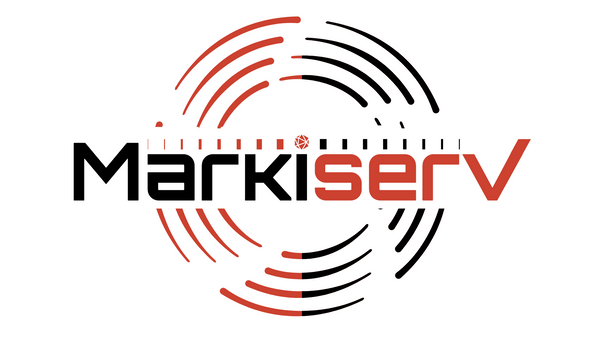
How Nonprofits Can Reduce Costs Without Sacrificing Impact
Share
Introduction
Running a nonprofit in 2025 is no small feat. With rising operational costs, donor fatigue, and an ever-shifting economic landscape, organizations dedicated to doing good often face tight budgets that threaten their missions. As of March 2, 2025, nonprofits are navigating a world where efficiency isn’t just a buzzword—it’s survival. The good news? You don’t have to cut corners on impact to save money. In this blog post, we’ll explore practical, proven strategies for nonprofits to reduce costs while keeping their goals front and center. From leveraging technology to rethinking staffing, here’s how your organization can thrive on less. If you are tight on internal resources you can also use firms like Markiserv to reduce costs and save you from overhead staff expenses.
Total giving for nonprofits exceeded $500 million dollars for the third consecutive year in a row last year. With this unstoppable momentum, a down economy will come as a hard barrier to organizations used to such productive growth.
Part 1: Core Strategies for Cost Reduction
Nonprofits often operate with lean resources, but smart planning can stretch every dollar further. Let’s dive into the foundational ways to cut costs without compromising your mission.
1. Embrace Technology and Automation
Why It Works: Technology in 2025 is more affordable and powerful than ever. Automating repetitive tasks—likeIMO saves time and money, letting staff focus on high-impact work.
How to Do It: Use free or low-cost tools like Google Workspace (starting at $6/user/month) for collaboration, or Zapier ($19.99/month) to connect apps and automate workflows. For donor management, platforms like Donorbox offer robust features with no monthly fees—just a 1.5% transaction fee.
Example: A small nonprofit switched from manual donation tracking to Donorbox in 2024, cutting admin time by 20 hours monthly—time worth $500 at minimum wage rates.
Cost Savings: Reduces labor costs and errors, potentially saving thousands annually for larger organizations.
2. Go Virtual Where Possible
Why It Works: Remote work and virtual events, turbocharged by the pandemic, are now mainstream. In 2025, cutting physical office space and travel slashes overhead.
How to Do It: Host webinars via Zoom ($15.99/month) or free platforms like Google Meet instead of in-person fundraisers. Shift staff to hybrid or remote setups, reducing rent and utilities.
Example: A youth nonprofit ditched its $2,000/month office lease in 2024, redirecting funds to program supplies.
Cost Savings: Savings can range from $500 to $50,000+ yearly, depending on location and size.
3. Negotiate Vendor Contracts
Why It Works: Vendors often have wiggle room on pricing, especially for nonprofits with a compelling mission.
How to Do It: Reach out to suppliers—printers, caterers, tech providers—and ask for discounts or in-kind donations. Highlight your tax-exempt status and impact stats.
Example: A food pantry negotiated a 15% discount on bulk purchases in 2025, saving $3,000 annually.
Cost Savings: Even 10-20% off regular expenses adds up fast.
4. Optimize Energy and Resource Use
Why It Works: Small changes in utilities and supplies trim costs without disrupting operations.
How to Do It: Switch to LED lighting, use programmable thermostats, and go paperless with e-signatures (DocuSign starts at $10/month). Buy second-hand furniture or equipment.
Example: A shelter cut its electric bill by 30% ($1,200/year) with energy-efficient upgrades in 2024.
Cost Savings: $500-$5,000 annually, depending on scale.
5. Consolidate Software Subscriptions
Why It Works: Nonprofits often juggle redundant tools. Streamlining saves money and boosts efficiency.
How to Do It: Audit your subscriptions—do you need both Canva Pro ($12.99/month) and Adobe Express ($9.99/month)? Pick one. Use all-in-one platforms like Zoho One ($37/user/month) to replace multiple apps.
Example: An advocacy group dropped three overlapping tools in 2025, saving $600/year.
Cost Savings: $200-$2,000 yearly, based on tool overlap.
Part 2: People-Centric Cost Savings
Staff and volunteers are a nonprofit’s heartbeat. Managing human resources wisely can unlock significant savings.
6. Leverage Volunteers Strategically
Why It Works: Volunteers are free labor, and in 2025, platforms make recruitment easier than ever.
How to Do It: Post opportunities on VolunteerMatch (free basic listing) or tap skilled retirees via LinkedIn. Train volunteers for higher-value tasks like grant writing or social media.
Example: A literacy nonprofit replaced a $20/hour part-time role with a volunteer in 2024, saving $20,800/year.
Cost Savings: $5,000-$50,000 annually, depending on hours replaced.
7. Cross-Train Staff
Why It Works: Versatile employees reduce the need for specialists or temps during peak times.
How to Do It: Offer free online training (e.g., Coursera’s Nonprofit Management courses, $49/month) to upskill staff in areas like bookkeeping or marketing.
Example: A health nonprofit avoided hiring a $30/hour contractor by training an admin in QuickBooks, saving $7,800 in 2025.
Cost Savings: $2,000-$20,000 yearly, based on roles covered.
8. Outsource Non-Core Functions
Why It Works: Hiring freelancers or agencies for sporadic needs beats full-time salaries.
How to Do It: Use Upwork (5% fee) for graphic design or Fiverr (from $5/task) for one-off projects. Outsource payroll to Gusto ($40/month + $6/employee).
Example: A wildlife group saved $15,000 in 2024 by outsourcing HR instead of hiring at $50,000/year.
Cost Savings: $5,000-$30,000 annually, depending on scope.
9. Rethink Benefits Packages
Why It Works: Creative perks can replace costly traditional benefits without losing talent.
How to Do It: Offer flexible hours, extra vacation days, or wellness stipends ($50/month) instead of pricier health plans. Partner with local businesses for discounts.
Example: An arts nonprofit swapped a $6,000/year insurance plan for a $1,200 wellness fund in 2025.
Cost Savings: $1,000-$10,000 per employee yearly.
Part 3: Fundraising and Revenue Tweaks
Cost-cutting isn’t just about spending less—it’s also about maximizing what you bring in.
10. Shift to Digital Fundraising
Why It Works: Online campaigns cost less than galas or mailers and reach wider audiences.
How to Do It: Use crowdfunding platforms like GoFundMe (0% platform fee, 2.9% processing) or peer-to-peer tools like Classy ($299/month for robust features). Ditch pricey event venues.
Example: A pet rescue raised $10,000 online in 2024 for $200 in ads, versus $5,000 spent on a $12,000 gala.
Cost Savings: $500-$10,000 per campaign.
11. Tap Into Corporate Partnerships
Why It Works: Companies love cause marketing, often providing cash or in-kind support.
How to Do It: Pitch sponsorships to local businesses—offer logo placement or social media shoutouts. Seek matching gift programs via Double the Donation ($499/year).
Example: A literacy program secured $8,000 in 2025 from a bookstore chain, offsetting event costs.
Cost Savings: $1,000-$20,000+ annually.
12. Sell Digital Products
Why It Works: Low overhead and infinite scalability make digital goods a revenue booster.
How to Do It: Create e-books, courses, or templates using tools like Teachable (free basic plan) or Gumroad (10% fee). Market via email lists.
Example: An environmental group sold a $10 climate guide in 2025, netting $4,000 after $200 in setup costs.
Cost Savings: Adds $500-$10,000 in profit yearly.
13. Apply for More Grants
Why It Works: Grants are free money—underutilized by many nonprofits due to time constraints.
How to Do It: Use GrantStation ($99/year) to find opportunities. Dedicate a volunteer or staffer to write proposals.
Example: A food bank landed a $15,000 grant in 2024 with $300 in research costs, far outpacing donations.
Cost Savings: $5,000-$100,000+ in new funding.
Part 4: Long-Term Cost Management
Sustainable savings require foresight. These strategies build a leaner future.
14. Conduct a Cost Audit
Why It Works: You can’t cut what you don’t see. Regular reviews spot waste.
How to Do It: Use free budgeting tools like Mint or hire a pro bono accountant via Catchafire. Analyze spending quarterly.
Example: A museum found $2,500 in unused subscriptions in 2025, redirecting it to outreach.
Cost Savings: $1,000-$10,000 annually.
15. Collaborate With Other Nonprofits
Why It Works: Sharing resources—space, staff, or bulk buys—slashes individual costs.
How to Do It: Join a local nonprofit network or co-host events. Split a grant writer’s salary.
Example: Two shelters shared a $1,200/month van lease in 2024, saving $7,200 each yearly.
Cost Savings: $1,000-$15,000 per partnership.
16. Invest in Preventive Maintenance
Why It Works: Fixing gear or systems early avoids pricey emergencies.
How to Do It: Schedule annual checkups for HVAC, computers, or vehicles. Budget 1-2% of asset value for upkeep.
Example: A clinic spent $500 on HVAC tuning in 2025, dodging a $4,000 repair.
Cost Savings: $500-$5,000 per incident avoided.
Conclusion
Nonprofits in 2025 can thrive on tight budgets by blending creativity, technology, and strategy. From automating tasks and going virtual to tapping volunteers and grants, these 16 tips offer a roadmap to cut costs without cutting corners. Start small—audit your expenses, negotiate a contract, or test a digital fundraiser. The savings stack up fast, freeing resources for what matters: your mission.
Which strategy resonates most with your nonprofit? Have a cost-saving win to share? Drop a comment below—I’d love to hear your story! Together, we can keep doing good, smarter.
Helpful Links to Learn More:
-
Why It’s Useful: Offers free guides, webinars, and podcasts on budgeting, technology, and nonprofit management. Check out their budgeting and cash flow tools to optimize your finances.
-
Why It’s Useful: Provides free courses like peer-to-peer fundraising, which can reduce campaign costs while boosting revenue. Perfect for learning digital fundraising on a budget.
-
Why It’s Useful: Connects nonprofits with discounted or free software (e.g., Microsoft Office, Google Workspace) to cut tech costs. A must for streamlining operations.
